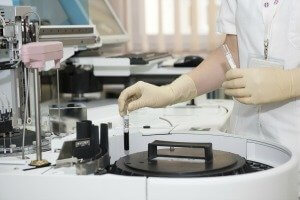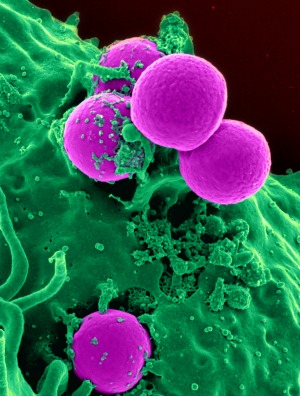Hope for the Future: An Engineered Bladder
 “Tissue engineering is the ultimate in reconstruction,” says David McConkey, Ph.D., Director of the Greenberg Bladder Cancer Institute at Johns Hopkins, “and we have a fantastic team” working to create a new bladder out of a patient’s own cells.
“Tissue engineering is the ultimate in reconstruction,” says David McConkey, Ph.D., Director of the Greenberg Bladder Cancer Institute at Johns Hopkins, “and we have a fantastic team” working to create a new bladder out of a patient’s own cells.
Using a scaffold to layer stem cells and similarly “plastic” cells called progenitor cells – kind of like chameleons, they can become different types of cells, depending on their environment, urologist Trinity Bivalacqua, M.D., Ph.D., and colleagues are doing “3-D chemistry,” McConkey explains. Getting these cells to take their proper places on the scaffold has been a huge challenge, “but Trinity solved it.” If this work proves successful, one day instead of crafting a neobladder (artificial bladder to replace a cancerous one) out of bowel tissue, surgeons will simply remove the old bladder and put in a brand new one.
I interviewed McConkey and Bivalacqua recently for Discovery, a magazine published by the Brady Urological Institute at Johns Hopkins. “We envision developing a clinically functional, tissue-engineered bladder by the end of 2025,” Bivalacqua told me. He and a “regenerative urology” research team are working hard toward this goal, buoyed by recent breakthroughs in the practical mechanics of how to do it.
The key is the organic framework that allows the patient’s own cells to grow over it. Bivalacqua is the first investigator to successfully complete a Phase 1 clinical trial in bladder cancer patients using this “autologous cell-seeded scaffold” to replace the urinary system after radical cystectomy, the surgical procedure to remove a cancerous bladder. “Although the Phase 1 trial demonstrated regeneration of urinary tissue, the neo-urinary conduit was not durable,” so the team brainstormed and “outlined a road to success,” Bivalacqua says.
The interdisciplinary team includes Bivalacqua, a surgeon-scientist, Anirudha Singh, Ph.D., a biomaterials and tissue engineer, and Nikolai Sopko M.D., Ph.D., a stem cell biologist. Their strategy begins with designing more durable materials “that will function as urinary tissue for a long time. The use of regenerated urinary tissue is necessary.” Currently, replacement bladders are made using part of the patient’s own intestine; this is not ideal and complications are common.
Singh’s laboratory recently developed a novel process to make collagen scaffolds for “urological neo-organs.” Collagen, Bivalacqua explains, “is one of the most suitable biomaterials, and is a natural choice here.” But developing a good scaffold proved a tough challenge, “until Singh’s laboratory created a simple yet elegant collagen molding technology, which resembles synthetic polymer processing methods, to create neo-organs.” The versatile design has “unprecedented features and user-controlled mechanical and biological properties.” A patent is pending. “Specifically, this process developed hollow and tubular collagen systems ranging from ureter-like micro-sized tubings to tubes with designer lumen that resembles intestinal villi, to complex seaweed-like structures as multiple mini-bladders for regenerative urology applications.”
This research was published in Nature Biomedical Engineering. As Singh continues to refine the scaffolds, Bivalacqua and Sopko’s laboratories are developing animal models for testing them.
©Janet Farrar Worthington




Leave a Reply
Want to join the discussion?Feel free to contribute!